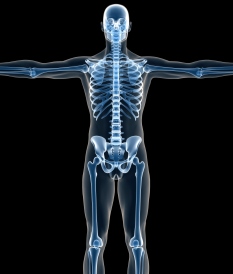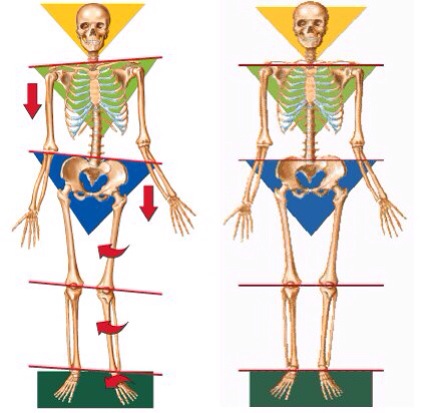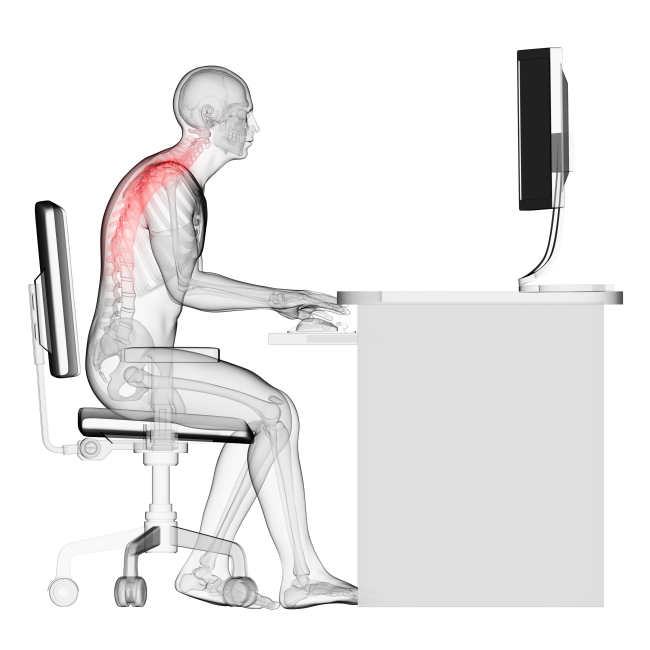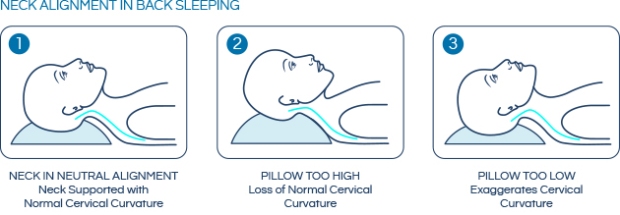We busy women love a big handbag. They contain our lives. Along side the keys, wallet, phone, they are our briefcase, our makeup bag and our gym bag AND a great fashion statement… all rolled into one!!
HOWEVER!!
I regret to inform you that these bags aren’t great for your health!
Let’s have a look at how these bags are influencing our posture…
Heavy Bag

Normal

Please let me draw your attention to the following:
— The side-to-side curve. The spine takes on a reverse ‘S’ shape curve to try and counterbalance the weight added by the large shoulder bag. Your body will always adapt to the centre of gravity to stop you from falling over, fine if this is a temporary measure… but walking for one, maybe two hours a day in this position!?! The side that your spine curves towards (the right for the mid back in this example, and the left side of the neck) will suffer from added pressure onto the joints.
— The uneven shoulders. The shoulder on the side carrying the bag gets higher in an attempt to keep the bag from falling off. This causes an increase in muscle activity in the carrying shoulder, and I often find patients have shortened/ hypertonic/ “knotted” muscles on their carrying arm. The lifting of this shoulder also works to compress that side of the neck EVEN MORE, adding all the more pressure onto the joints on that side of the neck.
— The straight, forward facing head. The brain always likes the eyes to be on an even plane. Therefore regardless of ALL the wonkiness & unevenness going on below the neck, the eyes are brought back straight. This means that the muscles on the left hand side of the neck are likely to work even harder and get even shorter. Carrying a bag in this position every day for a long time can lead to irritation to the joints of the neck and shoulder, overstrain of the muscles of the neck and possibly even effect the nerves of the neck (potentially leading to headaches/ eye pain).
— It looks UGLY!
Now I guess I need to provide some solutions to this problem!
The HOPE guide to continuing your relationship with your beaufiful, big Birkin!
1. Wear your bag on the right side if you are right-handed, on the left if you are left-handed.
We have naturally uneven shoulders, depending on our handedness. What that means is that it is usually the case that your right shoulder is lower (if you are right handed), or your left shoulder is lower (if you are left-handed)
Without even realizing it, you are probably adding to this uneven-ness by constantly wearing your bag on your non-dominant side (i.e.-the side that is already higher!).
2. Unpack your bag every night.
Buy a gorgeous tray. Put it in your front hallway. Every night, take out your wallet, keys, papers, phones, everything. So now you have the bonus of never losing your keys again, * and * you will become aware of what is essential and what is not essential for your daily life.
Same moisturizer coming in and out of the bag every night and you are not using it? Chuck it.
Half-drunk water bottle? Toss it or downsize.
3. Wear the strap around your forearm…or your hand.
Keeping the weight away from strong muscles in our upper body that love to shrug and hunch us over (I’m talking to you trapezius and pectorals) will reduce the stress on the spine.
The key here is hold the bag as close as you can to your body. The further away you hold it, the more your spine will have to bend to compensate (think of the x-ray) and your muscles will have to asymmetrically shorten. However this way of carrying your handbag may well lead to “Arm-hook crook”.

4. Take a page out of Cara Delevigne’s Book

Cara Delevingne leads the backpack revolution (Picture: DKNY)
From: Metro
5. SEE AN OSTEOPATH
Shameless self-promotion – I know, I know but we know how to keep your spine healthy and make sure you don’t develop bad postural habits over time. Book your appointment HERE or fill in the form below to receive offers, news, or for us to get back to you!










